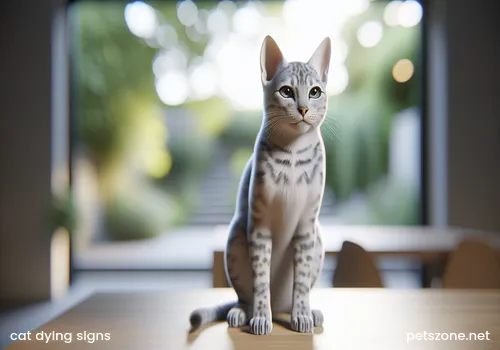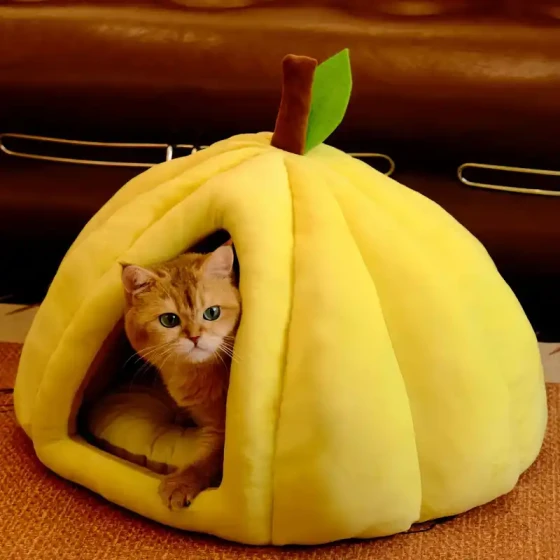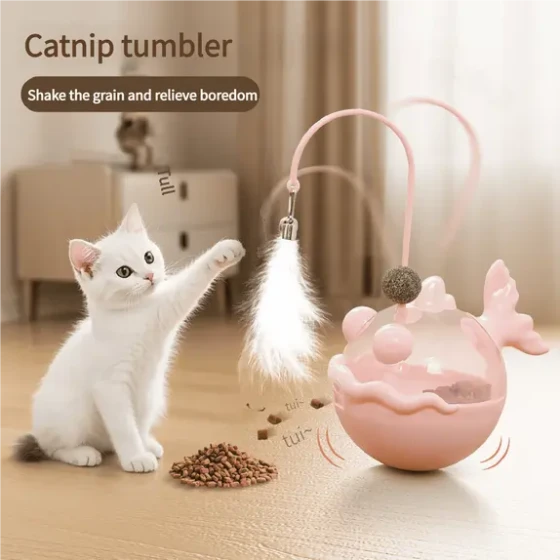Signs a Cat is Dying (Several Signs a Cat is Dying)
We know — your cat is a cherished, loyal companion. When a dog is dying, they clearly start to hide away and have low energy.
But what happens with cats? For many cats, this is their normal behavior (sometimes it’s why we love them).
In this article, we point out some common behaviors cats display when feeling very unwell or preparing to pass away.
Every cat is different, and you know your cat best. If your cat’s behavior starts to change and worries you — you may want to see a vet.
For some, recognizing these behaviors may help prepare for that moment.

Common Signs a Cat is Preparing to Pass
Is your cat dying? Here are some signs to watch for:
1. Behavior Changes
Different types of behavior may occur for various reasons, but obvious behavior changes can indicate an older cat is nearing death. Your cat may lose interest in playing, become more aloof, or become more social and want to be held — any number of changes may occur. Changes in appearance, such as your cat losing interest in grooming or being unable to stay clean, may also be warning signs.
2. Lethargy
As the end approaches, your cat may have much less energy for daily activities. Your pet might be sluggish, spend more time sleeping, and be harder to get attention from, groom, or get to eat. Of course, cats usually sleep a lot, but if your senior cat is slower moving and sleeping more than usual, this change may be significant.
3. Loss of Appetite
As internal organs begin to shut down, many cats lose interest in food and water. If your senior cat stops eating, especially if they stop eating and drinking, you might need to consider hospice care and related considerations.
4. Significant Weight Loss
Your furry friend may not be eating as much, or your cat’s body may no longer absorb nutrients like before. There are many causes for weight loss, but for an aging cat, it may be a sign the cat’s body is shutting down. If your usually healthy and energetic older cat suddenly becomes skin and bones, you may need to start preparing for your companion’s passing.
5. Low Body Temperature
Dying cats may experience a significant drop in body temperature. Healthy cats have temperatures around 100 to 102.5 degrees Fahrenheit, but a dying cat’s temperature may be much lower. If your cat is cooperative, or if the drop is severe, you can take your cat’s temperature with a thermometer; you can also often feel the difference by gently placing your hand on the cat’s body.
6. Low Heart Rate and Breathing
Similarly, as the body begins to shut down, your cat’s heart rate and breathing may slow. A healthy cat’s resting heart rate is about 150 to 200 beats per minute, while healthy cats breathe about 20 to 30 times per minute. If you check the heart rate of a sleepy cat and find it slow, and you notice less breathing than usual, these may be warning signs.
7. Hiding
Isolation is an instinctive response for dying cats. It protects the weak animal from predators. If your cat disappears for long periods near the end of its life, know your furry friend is not avoiding or rejecting you.
How to Comfort a Dying Cat
If you believe your cat is dying, you’ll want to make your feline companion as comfortable and loved as possible during their last few days. Here are some tips to comfort a cat nearing death:
1. Provide Special Treats
If your cat still has an appetite, offer tasty foods to help ease your cat through its last days. Particularly strong smells, such as fish-flavored foods, might help tempt your cat to eat. If your cat can’t chew, try offering canned food mixed with warm water, or you can try baby food. Be sure to check the ingredient list for anything your cat shouldn’t eat.
2. Prepare a Clean, Comfortable Bed
To make your cat feel more comfortable, add special textures to the cat bed or wherever your cat likes to sleep. Add extra blankets for cushioning, and if your cat can’t get into the litter box, be sure to change blankets regularly.
You can also place a small heating pad or electric blanket under the bed to help keep your cat warm and cozy. You may need to add extra blankets on top to prevent overheating from the heating pad.
3. Keep Your Cat’s Things Nearby
If your cat can still get up and move around, move food bowls, water bowls, and the litter box near the cat bed to make the last days easier. Minimizing the effort your cat has to make during the day will help your feline friend be more comfortable.
4. Spend Time Nearby
Your cat may want some space, preferring to sleep on the pet bed rather than cuddle. But you can still be a calming presence by quietly working, reading, or watching TV in the same room. If your cat does want to cuddle, be sure to give lots of love.
5. Keep the Cat’s Space Calm and Quiet
Try to keep your home calm and quiet so your cat can rest peacefully. If possible, minimize unfamiliar visitors and see if you can keep household commotion to a minimum. If you have family gatherings or events planned, try to hold them outdoors or in another room.
You might also play quiet, soothing music or sounds to provide extra comfort and block other noises — classical music, birdsong, or rain sounds can help relax and soothe your cat.



